|
The major flat submediant (bVI) is the tenth most common chord in The Beatles' catalog. It's used 262 times in 45 songs: [2] 'P. S. I Love You' bVI: 6 approach: I x2, V x4 progress: bVII x6 [3] 'Please Please Me' bVI: 1 approach: bIII x1 progress: V x1 [6] 'I Saw Her Standing There' bVI: 4 approach: IV x4 progress: I x4 [7] 'Do You Want To Know A Secret' bVI: 3 approach: ii x3 progress: I x3 [13e] 'Till There Was You' bVI: 1 approach: I x1 progress: I x1 [14] 'It Won't Be Long' bVI: 6 approach: I x6 progress: I x6 [20] 'Don't Bother Me' bVI: 2 approach: iv x2 progress: i x2 [25] 'And I Love Her' bVI: 5 approach: i x5 progress: Ø x5 [27] 'Tell Me Why' bVI: 1 approach: vi x1 progress: V x1 [30] 'I Call Your Name' bVI: 2 approach: II x2 progress: V x2 [33] 'I'll Be Back' bVI: 7 approach: bVII x7 progress: V x7 [35] 'Things We Said Today' bVI: 4 approach: bIII x4 progress: bII x4 [46e] 'Honey Don't' bVI: 10 approach: I x10 progress: I x5, V x5 [62] 'Run For Your Life' bVI: 4 approach: i x4 progress: V x4 [65] 'Day Tripper' bVI: 3 approach: Ø x3 progress: V x3 [68] 'We Can Work it Out' bVI: 4 approach: i x4 progress: V x4 [71] 'Michelle' bVI: 8 approach: i x5, bIII x3 progress: V x8 [73] 'Think For Yourself' bVI: 5 approach: I x5 progress: V x5 [85] 'I'm Only Sleeping' bVI: 18 approach: Ø x4, i x2, bIII x12 progress: Ø x6, i x4, bIII x8 [86] 'Eleanor Rigby' bVI: 10 approach: Ø x1, i x9 progress: i x10 [96] 'A Day in the Life' bVI: 2 approach: I x1, V x1 progress: bIII x2 [100] 'Only A Northern Song' bVI: 4 approach: i x4 progress: II x4 [101] 'Being for the Benefit of Mr. Kite' bVI: 12 approach: Ø x1, i x11 progress: V x12 [103] 'Lucy in the Sky With Diamonds' bVI: 3 approach: I x3 progress: I x3 [107] 'With a Little Help From My Friends' bVI: 2 approach: Ø x1, IV x1 progress: bVII x2 [115] 'Your Mother Should Know' bVI: 6 approach: i x6 progress: Ø x2, I x4 [116] 'I Am the Walrus' bVI: 11 approach: I x3, IV x3, V x1, bVII x4 progress: II x4, V x4, bVII x3 [120] 'Hello Goodbye' bVI: 5 approach: IV x5 progress: I x4, II x1 [122] 'Lady Madonna' bVI: 8 approach: IV x8 progress: bVII x8 [128] 'Blackbird' bVI: 4 approach: vi x4 progress: V x4 [141] 'Wild Honey Pie' bVI: 3 approach: VI x3 progress: V x3 [144] 'Glass Onion' A MINOR: bVI: 17 approach: i x7, bIII x3, IV x6, bVII x1 progress: i x6, IV x7, bVII x4 [145] 'I Will' bVI: 1 approach: V x1 progress: I x1 [149] 'Honey Pie' bVI: 12 approach: I x12 progress: V x5, VI x7 [150] 'Savoy Truffle' bVI: 5 approach: i x5 progress: Ø x5 [154] 'The Continuing Story of Bungalow Bill' bVI: 6 approach: bIII x6 progress: bVII x6 [167] 'I Want You (She's So Heavy)' bVI: 14 approach: II x6, IV x4, bVII x4 progress: Ø x4, V x1, V+ x6, bVII x3 [169] 'Old Brown Shoe' bVI: 9 approach: Ø x4, i x1, IV x4 progress: IV x4, V+ x5 [171] 'Oh! Darling' bVI: 4 approach: IV x2, V x2 progress: I x2, V x2 [173] 'You Never Give Me Your Money' bVI: 3 approach: bIII x3 progress: ii° x3 [176] 'Carry that Weight' bVI: 2 approach: bIII x2 progress: ii° x2 [182] 'Mean Mr. Mustard' bVI: 8 approach: I x4, V x2, VI x2 progress: V x6, VI x2 [183] 'Polythene Pam' bVI: 4 approach: I x2, V x2 progress: bVII x4 [185] 'Because' bVI: 10 approach: i x5, V x5 progress: i x5, bII x5 [186] 'I Me Mine' bVI: 3 approach: i x3 progress: Ø x1, i x2 Those 262 bVI chords are approached as follows... Ø: 14 instances (5.3%) in 6 songs
I: 47 instances (17.9%) in 10 songs
i: 71 instances (27.1%) in 14 songs
II: 8 instances (3.1%) in 2 songs
ii: 3 instances (1.1%) in 1 song
bIII: 34 instances (13.0%) in 8 songs
IV: 37 instances (14.1%) in 9 songs
iv: 3 instances (1.1%) in 2 songs
V: 14 instances (5.3%) in 7 songs
bVI: 6 instances (2.3%) in 1 song
VI: 5 instances (1.9%) in 2 songs
vi: 4 instances (1.5%) in 1 song
bVII: 16 instances (6.1%) in 4 songs
... and progress as follows: Ø: 23 instances (8.8%) in 6 songs
I: 39 instances (14.9%) in 11 songs
i: 29 instances (11.1%) in 6 songs
bII: 9 instances (3.4%) in 2 songs
II: 9 instances (3.4%) in 3 songs
ii°: 5 instances (1.9%) in 2 songs
bIII: 10 instances (3.8%) in 2 songs
IV: 11 instances (4.2%) in 2 songs
V: 77 instances (29.4%) in 18 songs
V+: 11 instances (4.2%) in 2 songs
VI: 9 instances (3.4%) in 2 songs
bVII: 30 instances (11.5%) in 7 songs
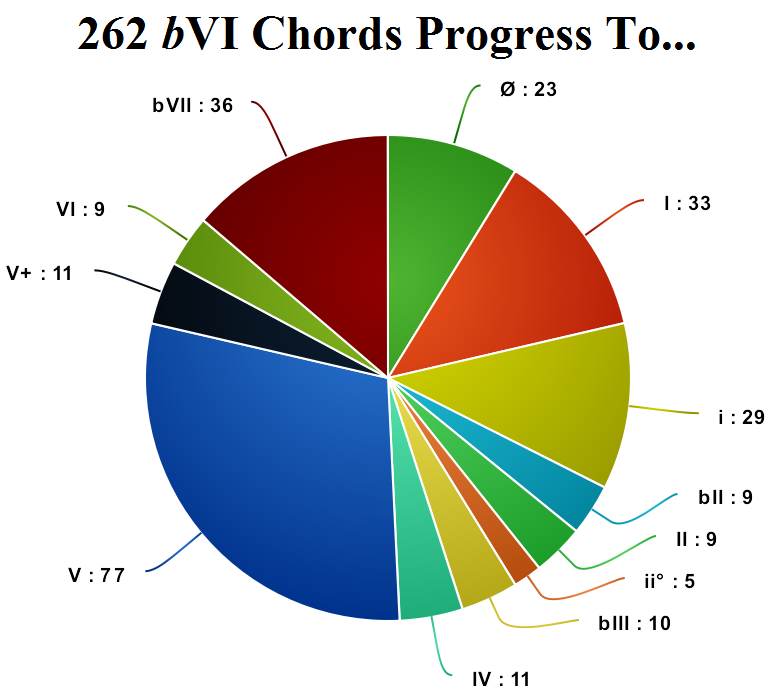 While the major flat submediant is rather common, the minor flat submediant (bvi) is extremely rare, appearing 3 times in just 1 song: [154] 'The Continuing Story of Bungalow Bill' bvi: 3 approach: i x3 progress: Ø x3 Surprisingly, the augmented flat submediant (bVI+) is more common - making the flat submediant the only chord whose augmented uses are greater than its minor uses. bVI+ is heard 8 times in 3 songs: [10] 'From Me To You' bVI+: 1 approach: vi x1 progress: I x1 [15] 'All My Loving' bVI+: 4 approach: vi x4 progress: I x4 [112] 'You Know My Name (Look Up The Number)' bVI+: 3 approach: IV x3 progress: vi x3 Meanwhile, tomorrow evening I'll be visiting Vidalia, LA for another round of "Band of the Sixties":
Thursday, 2 February 2017, 6:00-7:00 p.m. Vidalia Library, 408 Texas St, Vidalia, LA The Beatles: Band of the Sixties Explore the music of The Beatles in this 60-minute multimedia presentation (part history and part musical analysis) spanning the full 1960's: beginning with the band's seminal visits to Hamburg, continuing through Beatlemania, and concluding with Abbey Road. The program will be supplemented with audio clips of music and excerpts from interviews with the band members.
0 Comments
The Neapolitan chord (the major flat supertonic, or bII) is quite rare in Beatles music. It is heard in only 11 tracks: [7] 'Do You Want To Know A Secret' bII: 1 approach: bIII x1 progress: V x1 [14] 'It Won't Be Long' bII: 1 approach: II x1 progress: I x1 [28] 'If I Fell' bII: 2 approach: ii x2 progress: Ø x1, I x1 [35] 'Things We Said Today' bII: 6 approach: II x2, bVI x4 progress: i x6 [55] 'You're Going to Lose That Girl' bII: 2 approach: Ø x2 progress: I x2 [85] 'I'm Only Sleeping' bII: 2 approach: Ø x2 progress: i x2 [132] 'Revolution' bII: 1 approach: V x1 progress: I x1 [135] 'Sexy Sadie' bII: 2 approach: II x2 progress: I x2 [171] 'Oh! Darling' bII: 1 approach: I x1 progress: I x1 [181] 'Sun King' bII: 2 approach: Ø x1, I x1 progress: Ø x1, ii x1 [185] 'Because' bII: 5 approach: bVI x5 progress: bii° x5 These 11 songs employ a total of 25 Neapolitan chords, which are approached by... Ø: 5 instances (20.0%) in 3 songs
I: 2 instances (8.0%) in 2 songs
II: 5 instances (20.0%) in 3 songs
ii: 2 instances (8.0%) in 1 song
bIII: 1 instance (4.0%) in 1 song
V: 1 instances (4.0%) in 1 song
bVI: 9 instances (36.0%) in 2 songs
... and progress to: Ø: 2 instances (8.0%) in 2 songs
I: 8 instances (32.0%) in 6 songs
i: 8 instances (32.0%) in 2 songs
bii°: 5 instances (20.0%) in 1 song
ii: 1 instance (4.0%) in 1 songs
V: 1 instance (4.0%) in 1 song
This data is represented visually in the following pie graphs. Technically, Neapolitans can only be major. And The Beatles never used a minor Neapolitan (bii), so there's nothing to document or analyze there. But they did use a diminished Neapolitan (bii°) five times in 'Because': [185] 'Because' bii°: 5 approach: bII x5 progress: Ø x1, i x3, IV x1 It is the most harmonically unstable concluding chord of any Beatles recording, which sets up the massive 'Abbey Road Medley' that immediately follows. I won't be discussing Neapolitan chords at all tomorrow evening...
Monday, 30 January 2017, 6:00-7:00 p.m. Beauregard Parish Library, 205 S Washington St, DeRidder, LA The Beatles: Band of the Sixties Explore the music of The Beatles in this 60-minute multimedia presentation (part history and part musical analysis) spanning the full 1960's: beginning with the band's seminal visits to Hamburg, continuing through Beatlemania, and concluding with Abbey Road. The program will be supplemented with audio clips of music and excerpts from interviews with the band members. As a follow-up to my blog from the other day on how The Beatles used flat mediant chords, this one examines how The Beatles use mediant chords. The most common mediant chord is the minor mediant (iii), which, being heard 282 times in 46 songs, is the 9th most common chord The Beatles used. If you really want the nitty gritty blow-by-blow account, here's a PDF documenting every single one of those 282 iiis:
For those who would rather skip the details and cut to the good stuff, here's how those minor mediants are approached (the chords immediately preceding) and how they progress (what chord comes immediately next), represented via pie graphs: The next most commonly used mediant is the major mediant (III), heard 62 times in 18 tracks, making it the 15th most frequently used chord in The Beatles' catalog. Here's documentation for every single one of those 62 IIIs:
And the corresponding graphs: In the meantime, I continue even further south and a little west to enter Louisiana for the first time in my life, making The Pelican State the 30th of the 50 United States to host one of my programs. I will be participating in a friendly debate with the excellent and authoritative Beatles author Bruce Spizer regarding whether or not John Kennedy's assassination had any influence of The Beatles' meteoric rise to fame in the US a few months later.
Thursday, 26 January 2017, 6:30-7:30 p.m. Tangipahoa Parish Library, 314 E. Thomas St, Hammond, LA From the Shadow of JFK: The Rise of Beatlemania in America Many Beatles authors have cited John F. Kennedy's assassination on 22 November 1963 as a cause of the Beatles' sudden popularity in the United States in early 1964. Their logic: Kennedy's assassination made America sad, then the Beatles made America happy again. But this commonly accepted answer is overly simplistic. The real answer is that Kennedy's life and death inadvertently primed the nation for the Beatles' arrival and success. This 60-minute program will explain how and why. 47 of The Beatles' 211 tracks employ a major flat mediant chord (bIII). Those 47 are listed below, along with exhaustive documentation of how they are approached (what chord comes immediately before it) and how they progress (what comes immediately after it): [3] 'Please Please Me' bIII: 4 approach: I x4 progress: IV x3, bVI x1 [6b] 'A Taste Of Honey' bIII: 5 approach: i x3, IV x2 progress: bVII x5 [7] 'Do You Want To Know A Secret' bIII: 1 approach: i x1 progress: bII x1 [9] 'Hold Me Tight' bIII: 4 approach: I x4 progress: I x4 [14] 'It Won't Be Long' bIII: 1 approach: I x1 progress: II x1 [20] 'Don't Bother Me' bIII: 10 approach: IV x10 progress: i x10 [35] 'Things We Said Today' bIII: 4 approach: i x4 progress: bVI x4 [48] 'Another Girl' bIII: 4 approach: Ø x2, IV x2 progress: Ø x2, V x2 [51] 'The Night Before' bIII: 4 approach: I x4 progress: I x1, IV x3 [52] 'You Like Me Too Much' bIII: 2 approach: I x2 progress: V x2 [61] 'Wait' bIII: 10 approach: Ø x6, i x4 progress: Ø x4, V x6 [71] 'Michelle' bIII: 3 approach: i x3 progress: bVI x3 [73] 'Think For Yourself' bIII: 6 approach: v x6 progress: IV x6 [74] 'The Word' bIII: 5 approach: bVII x5 progress: Ø x1, IV x4 [76] 'Girl' bIII: 5 approach: i x1, iv x4 progress: Ø x1, V x4 [84] 'Taxman' bIII: 1 approach: I x1 progress: I x1 [85] 'I'm Only Sleeping' bIII: 16 approach: iv x8, bVI x8 progress: V x4, bVI x12 [91] 'Here There And Everywhere' bIII: 1 approach: iii x1 progress: ii x1 [95] 'Penny Lane' bIII: 3 approach: Ø x3 progress: V x3 [96] 'A Day in the Life' bIII: 2 approach: bVI x2 progress: bVII x2 [97] 'Sergeant Pepper's Lonely Hearts Club Band' bIII: 2 approach: I x2 progress: IV x2 [100] 'Only A Northern Song' bIII: 5 approach: Ø x1, V x4 progress: Ø x4, IV x1 [102] 'Lovely Rita' bIII: 4 approach: bVII x4 progress: I x4 [108] 'Sergeant Pepper's Lonely Hearts Club Band (reprise)' bIII: 5 approach: I x5 progress: IV x5 [109] 'Magical Mystery Tour' bIII: 12 approach: I x12 progress: IV x12 [110] 'Baby, You're a Rich Man' bIII: 2 approach: IV x2 progress: I x2 [115] 'Your Mother Should Know' bIII: 5 approach: Ø x5 progress: V x5 [116] 'I Am the Walrus' bIII: 12 approach: I x6, II x4, IV x2 progress: II x2, IV x10 [128] 'Blackbird' bIII: 4 approach: IV x4 progress: II x2, IV x2 [129] 'Everybody's Got Something to Hide Except for Me and My Monkey' bIII: 6 approach: I x3, bVII x3 progress: I x3, bVII x3 [134] 'Helter Skelter' bIII: 5 approach: I x5 progress: I x2, IV x3 [136] 'While My Guitar Gently Weeps' bIII: 5 approach: bVII x5 progress: V x5 [138] 'Mother Nature's Son' bIII: 6 approach: I x6 progress: IV x6 [139] 'Yer Blues' bIII: 8 approach: I x8 progress: V x8 [142] 'Back in the USSR' bIII: 12 approach: I x4, IV x8 progress: IV x12 [143] 'Dear Prudence' bIII: 1 approach: IV x1 progress: bV x1 [144] 'Glass Onion' A MINOR: bIII: 6 approach: bvii x6 progress: bVI x3, bvii x3 [148] 'Happiness is a Warm Gun' bIII: 5 approach: I x5 progress: I x3, i x2 [150] 'Savoy Truffle' bIII: 8 approach: IV x8 progress: V x8 [154] 'The Continuing Story of Bungalow Bill' bIII: 6 approach: i x6 progress: bVI x6 [167] 'I Want You (She's So Heavy)' bIII: 8 approach: i x8 progress: IV x4, bVII x4 [170] 'Something' bIII: 6 approach: IV x6 progress: V x6 [173] 'You Never Give Me Your Money' bIII: 10 approach: I x4, II x3, bVII x3 progress: V x2, bVI x3, bVII x5 [176] 'Carry that Weight' bIII: 4 approach: Ø x1, I x1, bVII x2 progress: V x2, bVI x2 [177] 'Here Comes the Sun' bIII: 6 approach: V x6 progress: bVII x6 [180] 'The End' bIII: 1 approach: II x1 progress: IV x1 [183] 'Polythene Pam' bIII: 2 approach: I x2 progress: V x2 Those 47 songs use a total of 247 major flat mediants, making it the 12th most common chord in The Beatles' catalog. Here's how those 247 bIIIs are approached: Ø: 18 instances (7.3%) in 6 songs
I: 79 instances (32.0%) in 19 songs
i: 30 instances (12.1%) in 8 songs
II: 8 instances (3.2%) in 3 songs
iii: 1 instance (0.4%) in 1 song
IV: 45 instances (18.2%) in 10 songs
iv: 12 instances (4.9%) in 2 songs
V: 10 instances (4.0%) in 2 songs
v: 6 instances in (2.4%) 1 song
bVI: 10 instances (4.0%) in 2 songs
bVII: 22 instances (8.9%) in 6 songs
bvii: 6 instances (2.4%) in 1 song
And here's how they progress: Ø: 12 instances (4.9%) in 5 songs
I: 20 instances (8.1%) in 8 songs
i: 12 instances (4.9%) in 2 songs
bII: 1 instance (0.4%) in 1 song
II: 5 instances (2.0%) in 3 songs
ii: 1 instance (0.4%) in 1 song
IV: 74 instances (30.0%) in 15 songs
bV: 1 instance (0.4%) in 1 song
V: 59 instances (23.9%) in 14 songs
bVI: 34 instances (13.8%) in 8 songs
bVII: 25 instances (10.1%) in 6 songs
bvii: 3 instances (1.2%) in 1 song
Far less common is the minor flat mediant (biii), found 22 times in 3 songs: [7] 'Do You Want To Know A Secret' biii: 15 approach: iii x15 progress: ii x15 [13e] 'Till There Was You' biii: 5 approach: iii x5 progress: ii x5 [122] 'Lady Madonna' biii: 2 approach: ii x2 progress: ii x2 And rarer still is the diminished flat mediant (biii°), used 8 times in 1 song: [28] 'If I Fell' biii°: 8 approach: iii x8 progress: ii x8 CONCLUSIONS: So what do all these numbers means, and who really cares? My entire career is designed to answer one fundamental question: Why were The Beatles so great? Every presentation I deliver, every book I author, every interview I give, and every blog I write is designed to contribute to answering that inquiry. In traditional classical contexts, tonal chords function in relatively few ways: Certain chords are "required" to progress to others. But The Beatles often use chords that function in multiple ways. And the major flat mediant (by far the most commonly used variety of flat mediants) is a prime example, being approached in 12 different ways and progressing also in 12 different ways. In other words, we can better understand The Beatles' extraordinary use of harmony on a macro level by examining and understanding their use of harmony on a micro level - in this case by studying their use of flat mediant chords in great detail. The tour continues tomorrow as I head even further south.
Tuesday, 24 January 2017, 7:00-8:00 p.m. Amory Municipal Library, 401 2nd Ave N, Amory, MS The Beatles: Band of the Sixties Explore the music of The Beatles in this 60-minute multimedia presentation (part history and part musical analysis) spanning the full 1960's: beginning with the band's seminal visits to Hamburg, continuing through Beatlemania, and concluding with Abbey Road. The program will be supplemented with audio clips of music and excerpts from interviews with the band members. For the record, I won't be discussing flat mediant chords at all! 'From Me To You' and 'All My Loving' share an ambiguous harmonic progression. Both use a vi resolving to I. But in between those standard chords is a very strange one. It could either be interpreted as a bVI+ or a /b6: and or and And here's what it ultimately boils down to: Is this progression three different chords (in which case the bVI+ should be used)? Or is it two different chords connected by a chromatic passing tone (in which case the /b6 should be used)? Neither is necessarily "right" or "wrong", they're just different interpretations of the same progression. Meanwhile, I wrap up the final tour of 2016 tomorrow:
Tuesday, 29 November 2016, 6:00-7:00 p.m. La Salle Public Library, 305 Marquette St, Lasalle, IL The Beatles: Band of the Sixties Explore the music of The Beatles in this 60-minute multimedia presentation (part history and part musical analysis) spanning the full 1960's: beginning with the band's seminal visits to Hamburg, continuing through Beatlemania, and concluding with Abbey Road. The program will be supplemented with audio clips of music and excerpts from interviews with the band members. The Beatles' extraordinary sense of harmony can be seen in their first recordings. While several of the tracks on their first album, Please Please Me (1963), employ utterly conventional harmony (see 'Misery' or 'Boys'), several also contain exquisite and innovative progressions (see 'Ask Me Why', 'Do You Want To Know A Secret?', or 'There's A Place'). This blog will look at all 14 tracks on the album in the order in which they are heard. Each track is analyzed using Roman Numeral analysis, with the results compiled into a concordance documenting how every chord is approached (what came immediately before it) and how it progresses (what comes immediately after it), followed by a consideration and discussion of the harmonies used on that particular song. It should be noted that 6 of the 14 songs on this album are covers, meaning The Beatles did not write the harmony. Nevertheless, they chose either to retain the harmony of the originals or tweak that harmony (such as the Picardy third in 'A Taste Of Honey', which is absent from the original). This catalog analyzes the harmony heard on the album - regardless of who decided to use the chords - because that what The Beatles put forth as their finished product. 1. 'I Saw Her Standing There' I: 24 approach: Ø x1, IV x8, V x11, bVI x4 progress: Ø x1, IV x11, V x12 IV: 14 approach: I x11, V x3 progress: I x8, V x2, bVI x4 V: 14 approach: I x12, IV x2 progress: I x11, IV x3 bVI: 4 approach: IV x4 progress: I x4 The opening track uses fairly standard bluesy harmony. The one unusual chord is found in the refrains, when a bVI is heard on the falsetto "Oh!" It's the first example of a bVI being used as a V substitute. In other words, this harmony would make perfect sense and be more "normal" if a V had been used instead of a bVI. This is a trick The Beatles would pull several more times in their career (including 'Hello Goodbye'). 2. 'Misery' I: 16 approach: IV x4, V x8, vi x4 progress: IV x8, vi x8 IV: 9 approach: Ø x1, I x8 progress: I x4, V x5 V: 8 approach: IV x5, iv x3 progress: I x8 vi: 8 approach: I x8 progress: Ø x1, I x4, V x3 Plain vanilla harmony here. 3. 'Anna (Go To Him)' I: 26 approach: Ø x1, IV x2, V x6, vi x17 progress: Ø x1, IV x4, vi x21 II: 2 approach: IV x2 progress: V x2 ii: 4 approach: vi x4 progress: V x4 IV: 4 approach: I x4 progress: I x2, II x2 V: 6 approach: II x2, ii x4 progress: I x6 vi: 21 approach: I x21 progress: I x17, ii x4 Also pretty tame harmony. The use of a secondary dominant toward the end of the bridge makes a nice harmonic pull back to tonic for the return of the verse... ... but even that is about as conventional as secondary functions get. 4. 'Chains' I: 16 approach: Ø x1, IV x10, iv x1, V x4 progress: Ø x1, IV x9, V x6 IV: 13 approach: I x9, V x4 progress: I x10, iv x1, V x2 iv: 1 approach: IV x1 progress: I x1 V: 8 approach: I x6, IV x2 progress: I x4, IV x4 Textbook 12 bar blues harmony here, with the one exception being the subdominant mode mixture (IV-iv) at the end as the track is fading out. My favorite part of what is - let's be honest here - kind of a dull song! 5. 'Boys' I: 21 approach: IV x14, V x7 progress: IV x7, V x14 IV: 14 approach: I x7, V x7 progress: I x14 V: 15 approach: Ø x1, I x14 progress: Ø x1, I x7, IV x7 Like 'Chains', 'Boys' is also a standard 12 bar blues. Unlike 'Chains', 'Boys' doesn't deviate from the 12 bar blues model at all, making it complete standard harmony. 6. 'Ask Me Why' I: 18 approach: Ø x1, ii x6, IV x4, iv x1, V x6 progress: I+ x4, ii x9, III x3, IV x2 I+: 4 approach: I x4 progress: IV x4 II: 2 approach: iv x2 progress: V x2 ii: 15 approach: I x9, iii x6 progress: I x6, iii x9 III: 3 approach: I x3 progress: vi x3 iii: 13 approach: ii x9, IV x4 progress: Ø x1, ii x6, IV x6 IV: 12 approach: I x2, I+ x4, iii x6 progress: I x4, iii x4, V x4 iv: 3 approach: vi x3 progress: I x1, II x2 V: 6 approach: II x2, IV x4 progress: I x6 vi: 3 approach: III x3 progress: iv x3 Now we're talking! One rather crude measure of harmonic sophistication is the number of different chords used in a song. 'Boys' used just three chords; 'Ask Me Why' uses ten. Furthermore, those ten chords are used in intriguing and unconventional ways. The chord planing in the initial two phrases of each verse are unusual. This creates an ascending progression (I-ii-iii) that is immediately counter-balanced by the same pattern in reverse (iii-ii-I). I can't think of any pop song prior to this one to do that, although the classical music of Claude Debussy (1862-1918) immediately comes to mind. The second iteration of this ascending/descending phrase is propelled by a secondary dominant (III7) to the relative minor (vi). This isn't terribly rare, but it's also not terribly common - or least not for the time. The Beatles would frequently use this pattern in a variety of contexts throughout the decade (see 'Your Mother Should Know' from 1967,and 'There's A Place' below). The pull towards vi is a potential threat to I's tonal authority. But that peril is immediately quashed by a strong half cadence that is reinforced with a secondary dominant of its own (this time the more conventional II functioning as a V of V, which ensures I is still tonic). Also note another example of subdominant mode mixture (iv) similar to the end of 'Chains' except in this case there's no IV preceding the iv. 'Ask Me Why' is also the first use of an augmented chord - in this case a I+. This enhances the secondary function of the chord, as it pulls toward resolution on IV to start the bridge. Also notice how the IV chord is approached by a iii. This, too, is somewhat unusual - and something The Beatles will use periodically throughout their career (see 'I Want To Hold Your Hand', 'Getting Better', or 'There's A Place' below). Finally, we've seen above how the III7-vi progression threatens but never overthrows I. The end of the song, however, does overthrow I. The calm alternation between I and IV at the end reinforces the sense of conclusion. And a lesser composer might have ended the song conventionally by retaining I's authority... .. but John Lennon chose the far more intriguing and highly unusual jazzy iii7. I have a feeling this is the kind of song Bob Dylan had in mind when he said of The Beatles, "They were doing things nobody was doing. Their chords were outrageous, just outrageous, and their harmonies made it all valid. Everybody else thought they were teenyboppers, that they were gonna pass right away. But it was obvious to me that they had staying power. I knew they were pointing to the direction where music had to go." (Encyclopedia of leadership, edited by George R. Goethals, Georgia Jones Sorenson, James MacGregor Burns, page 87) 7. 'Please Please Me' I: 24 approach: Ø x1, IV x9, V x14 progress: Ø x1, bIII x4, IV x19 ii: 3 approach: IV x3 progress: vi x3 bIII: 4 approach: I x4 progress: IV x3, bVI x1 IV: 25 approach: I x19, bIII x3, vi x3 progress: I x9, ii x3, V x13 V: 14 approach: IV x13, bVI x1 progress: I x14 bVI: 1 approach: bIII x1 progress: V x1 vi: 3 approach: ii x3 progress: IV x3 The harmonies of 'Please Please Me' are, for the most part, standard. But a few chords on this album's title track are somewhat unusual. The opening phrases of each of the three verses contains an energetic non-diatonic progression of three major chords each a major second higher pitched than the previous. As I illustrate in my presentation The Beatles: Band of the Sixties, this unusual progression was likely lifted from Carl Perkins' song 'Lend Me Your Comb' (1957). The famous story is that 'Please Please Me' was originally a slow ballad until George Martin suggested they ramp up the tempo and turn it into a rock song instead. Presumably, this was when John borrowed from Perkins' example as a way to inject some enthusiasm into the song. The other progression that likely resulted from Martin's suggestion was the coda, which employs a secondary dominant on bIII (rather unusual) and uses bVI as a pre-dominant (something The Beatles would use again several times in the future - see 'Run For Your Life', 'Day Tripper', and 'We Can Work It Out'). 8. 'Love Me Do' I: 28 approach: Ø x1, IV x27 progress: Ø x1, IV x23, V x4 IV: 27 approach: I x23, V x4 progress: I x27 V: 4 approach: I x4 progress: IV x4 I can tell this was an early attempt at songwriting. The chords, while pleasant, are about as conventional as harmony gets. Not much to say here... 9. 'P. S. I Love You' I: 22 approach: ii x4, IV x6, V x3, bVII x6, vii° x3 progress: Ø x1, ii x4, IV x8, V x7, bVI x2 ii: 4 approach: I x4 progress: I x4 IV: 9 approach: Ø x1, I x8 progress: I x6, vii° x3 V: 11 approach: I x7, vi x4 progress: I x3, bVI x4, vi x4 bVI: 6 approach: I x2, V x4 progress: bVII x6 vi: 4 approach: V x4 progress: V x4 bVII: 6 approach: bVI x6 progress: I x6 vii°: 3 approach: IV x3 progress: I x3 Quite similar to 'Please Please Me', 'P. S. I Love You' also employs the non-diatonic progression of three major chords each a major second higher than the previous. In this case, however, it's using bVI-bVII-I (whereas 'Please Please Me' used bIII-IV-V). While they're not identical (different keys, different chords, different scale degrees), they are quite similar. I suspect that 'P. S. I Love You' was also inspired by Carl Perkins' 'Lend Me Your Comb', though it's a less obvious influence. 'P. S.' is also The Beatles' first use of a diminished chord. In the introductory bridge - and, curiously, only in the introductory bridge - a highly unusual vii° is inserted in between the conventional IV and I. Why this diminished chord is not reprized in the two subsequent the bridges has mystified me for years. And right now, as I'm typing this, it finally dawned on me: The other bridges contain harmony vocals, but the introductory bridge does not. To retain the vii°, then, would have required alterations to the vocal harmonies to reinforce that diminished chord in a way that was not necessary in the intro. 10. 'Baby It's You' I: 17 approach: Ø x1, ii x3, IV x4, V x5, vi x4 progress: IV x3, vi x14 ii: 3 approach: vi x3 progress: I x3 IV: 9 approach: I x3, vi x6 progress: I x4, V x5 V: 5 approach: IV x5 progress: I x5 vi: 14 approach: I x14 progress: Ø x1, I x4, ii x3, IV x6 'Baby It's You' employs five chords, all in standard ways. The one possible exception might be the cadence ii-I. This is unusual in classical contexts, but fairly standard in pop contexts. The Beatles would use this resolution on occasion (see 'Till There Was You' or 'I Want To Tell You'). 11. 'Do You Want To Know A Secret?' I: 15 approach: V x12, bVI x3 progress: iii x15 i: 2 approach: Ø x1, iv x1 progress: bIII x1, iv x1 bII: 1 approach: bIII x1 progress: V x1 ii: 21 approach: biii x15, IV x2, v x1, vi x3 progress: V x16, bVI x3, vi x2 bIII: 1 approach: i x1 progress: bII x1 biii: 15 approach: iii x15 progress: ii x15 iii: 15 approach: I x15 progress: biii x15 IV: 5 approach: V x4, v x1 progress: ii x2, V x3 iv: 1 approach: i x1 progress: i x1 V: 20 approach: bII x1, ii x16, IV x3 progress: Ø x1, I x12, IV x4, vi x3 vi: 2 approach: vi x2 progress: ii x1, IV x1 bVI: 3 approach: ii x3 progress: I x3 vi: 5 approach: ii x2, V x3 progress: ii x3, v x2 'Do You Want To Know A Secret' incorporates 13 different chords - the most of any song on Please Please Me. This is due, in part, to the introduction. Four of the intro's five chords are never heard again in the song - the one exception being the V. While the first phrase is harmonically conventional (i-iv-i), the second is anything but. It's the first example in The Beatles' work of a Neapolitan chord (bII). And the tritone root motion of bII-V also fits into Dylan's "just outrageous" category. Overall, the intro to 'Secret' strongly foreshadows Lennon's introduction to 'If I Fell' from one year later. Similar to 'Ask Me Why', 'Secret' also employs chord planing - in this case iii-biii-ii. Unlike 'Ask', however, this time it's chromatic. No doubt the inspiration was 'Till There Was You'. Similar to 'I Saw Her Standing There', 'Secret' also uses a bVI as a V substitute. This passage could easily have instead used the more conventional V. Lastly, 'Secret' is the first example in The Beatles' catalog of a deceptive cadence (V-vi). 12. 'A Taste Of Honey' I: 1 approach: IV x1 progress: Ø x1 i: 14 approach: Ø x1, IV x8, bVII x5 progress: bIII x3, IV x11 bIII: 5 approach: i x3, IV x2 progress: bVII x5 IV: 11 approach: i x11 progress: I x1, i x8, bIII x2 bVII: 5 approach: bIII x5 progress: i x5 'A Taste of Honey' is the first Beatles song in a minor key. As I blogged about yesterday, just 40 (19.0%) of the band's 211-song catalog employ at least one minor tonality. And of those 40, just eight are only in minor - and 'Honey' is the first. In that sense, the harmonies of 'Honey' are unusual for The Beatles simply because they're in minor. But within that somewhat unusual minor framework, the harmonies are pretty standard. That being said, it's worth mentioning the Picardy third that concludes the song as it's one of only two in the Beatles catalog (the other being 'And I Love Her'). 13. 'There's A Place' I: 16 approach: Ø x1, II x2, IV x10, vi x3 progress: III x2, IV x11, vi x3 II: 2 approach: vi x2 progress: I x2 III: 2 approach: I x2 progress: vi x2 iii: 2 approach: V x2 progress: IV x2 IV: 14 approach: I x11, iii x2, V x1 progress: Ø x1, I x10, V x1, vi x2 V: 4 approach: IV x1, vi x3 progress: iii x2, IV x1, vi x1 vi: 8 approach: I x3, III x2, IV x2, V x1 progress: I x3, II x2, V x3 'There's A Place' is a sibling of 'Ask Me Why'. Both are "under the radar" kind of songs, with neither typically considered among The Beatles' best work, but their harmony is extraordinary and similar. One noteworthy aspect of 'Place' that is not found in 'Ask Me Why' is a particular pattern of four chords in which the second and fourth are the same, but the first and third are similar but not identical. In this case, its the progression iii-IV-I-IV. Two things stand out about this phrase. First, this four-chord pattern will reappear periodically throughout The Beatles' catalog ('No Reply' comes to mind, which uses vi-iii-IV-iii). The band obviously liked this pattern since they continued to use it. Second, it's another example of iii functioning as a leading tone (or more precisely leading chord) to IV, something also found in 'Ask Me Why'. Just as scale degree 7 has a strong harmonic pull towards scale degree 1, so too scale degree 3 has a strong pull toward 4. That's unsurprising as 3-4 and 7-1 are the two half steps in the major scale. What is somewhat surprising, however, is the use of the iii chord (not just scale degree) resolving to the IV chord. As mentioned earlier, this is distinctly unclassical (I don't believe Beethoven ever wrote such a progression), but it's relatively common in popular styles. Another earcatcher is the cadence II-I, similar to the ii-I cadence mentioned above in both 'Ask Me Why' and 'Baby It's You'. This, too, is distinctly unclassical, yet it's relatively common in pop contexts. Finally, the above is also another example of III functioning as a secondary dominant of vi, as cited above in the consideration of 'Ask Me Why'. 14. 'Twist And Shout' I: 34 approach: Ø x1, V x33 progress: Ø x1, IV x33 IV: 33 approach: I x33 progress: V x33 V: 33 approach: IV x33 progress: I x33 Like 'Boys' and 'Love Me Do', the three-chord harmony on 'Twist And Shout' could hardly be more simple. Now, let me be clear: Simple doesn't mean bad. In this case, the minimal quantity of chords are used to maximum effect - particularly the two "ah" build-ups on V that create so much harmonic tension that their resolutions are absolutely eargasmic. Tomorrow I return to my signature program:
Thursday, 17 November 2016, 6:00-7:00 p.m. Mead Public Library, 710 N 8th St, Sheboygan, WI The Beatles: Band of the Sixties Explore the music of The Beatles in this 60-minute multimedia presentation (part history and part musical analysis) spanning the full 1960's: beginning with the band's seminal visits to Hamburg, continuing through Beatlemania, and concluding with Abbey Road. The program will be supplemented with audio clips of music and excerpts from interviews with the band members. The vast majority of The Beatles' recordings are in a major key. In fact, 171 (81.0%) of the band's 211 tracks are exclusively in major keys. That leaves 40 songs (19.0%) that use (a) minor key(s). Eight are in minor and only in minor:
Much more common are songs that are partially in minor. This is found on 30 tracks:
Lastly, two are neither major nor minor:
Tomorrow evening I speak for a third time at the Fremont library (during which I will miss my only chance to see Deconstructing The White Album - oh well!).
Wednesday, 16 November 2016, 7:00-8:00 p.m. Fremont Public Library, 1170 N Midlothian Rd, Mundelein, IL The Beatles & The Rolling Stones Ask anybody to name two English rock bands from the 1960s and the response will likely be The Beatles and The Rolling Stones. But despite often being portrayed as rivals in the media, the two groups were actually quite friendly towards each other, both socially and musically. This 60-minute presentation will compare and contrast the two through musical examples and interviews with the band members to illustrate the relationship between The Beatles & The Rolling Stones. Yesterday I discussed the lydian plagal cadence, and how the lydian leanings of the II chord were sometimes thwarted by the plagal cadence that immediately followed it. It lead me to wonder what other ways The Beatles use the II chord. There are two aspects that must be considered when analyzing how the II functions in Beatles songs: first, how it's approached (in other words, what comes immediately before the II); second, how it progresses (what comes immediately after the II). 72 of The Beatles' 211 officially recorded and released tracks between 1963-70 employ at least one II chord. The list below shows precisely how each song's II chords are approached and how they progress. [4] 'Ask Me Why' II: 2 approach: iv x2 progress: V x2 [9] 'Hold Me Tight' II: 10 approach: ii x2, IV x8 progress: V x10 [9b] 'Anna (Go To Him)' II: 2 approach: IV x2 progress: V x2 [10] 'From Me To You' II: 2 approach: IV x2 progress: V x2 [12] 'She Loves You' II: 3 approach: vi x3 progress: IV x1, iv x2 [13] 'I'll Get You' II: 1 approach: I x1 progress: V x1 [13b] 'You Really Got A Hold On Me' II: 3 approach: IV x3 progress: V x3 [13d] 'Devil In Her Heart' II: 3 approach: iv x3 progress: V x3 [13e] 'Till There Was You' II: 2 approach: ii x2 progress: V x2 [14] 'It Won't Be Long' II: 1 approach: bIII x1 progress: bII x1 [16] 'I Wanna Be Your Man' II: 6 approach: I x3, VI x3 progress: V x6 [17] 'Little Child' II: 8 approach: I x2, IV x5, VI x1 progress: V x8 [20] 'Don't Bother Me' II: 10 approach: III x10 progress: I x10 [22] 'This Boy' II: 1 approach: IV x1 progress: V x1 [30] 'I Call Your Name' II: 8 approach: Ø x1, iv x2, VI x5 progress: IV x4, V x2, bVI x2 [32] 'I'll Cry Instead' II: 4 approach: iii x2, vi x2 progress: V x4 [33] 'I'll Be Back' II: 1 approach: vi x1 progress: IV x1 [35] 'Things We Said Today' II: 4 approach: IV x4 progress: V x4 [36] 'When I Get Home' II: 5 approach: IV x5 progress: V x5 [37] 'Baby's In Black' II: 2 approach: vi x2 progress: IV x2 [40] 'I Don't Want To Spoil the Party' II: 4 approach: vi x4 progress: IV x4 [41] 'What You're Doing' II: 26 approach: I x19, vi x7 progress: Ø x2, I x15, vi x9 [43] 'Eight Days A Week' II: 20 approach: I x14, vi x6 progress: I x4, IV x16 [46] 'I'll Follow the Sun' II: 10 approach: I x5, iii x5 progress: I x5, V x5 [48] 'Another Girl' II: 2 approach: Ø x2 progress: I x2 [49] 'I Need You' II: 2 approach: V x2 progress: V x2 [50] 'Yes It Is' II: 2 approach: I x2 progress: V x2 [52] 'You Like Me Too Much' II: 6 approach: iii x2, vi x4 progress: iii x2, V x2, VI x2 [59] 'Yesterday' II: 5 approach: vi x5 progress: IV x5 [60b] 'Act Naturally' II: 2 approach: I x2 progress: V x2 [61] 'Wait' II: 4 approach: Ø x2, vi x2 progress: V x4 [64] 'Drive My Car' II: 4 approach: vi x4 progress: V x4 [65] 'Day Tripper' II: 3 approach: I x3 progress: Ø x3 [67] 'In My Life' II: 3 approach: vi x3 progress: iv x3 [75] 'You Won't See Me' II: 15 approach: I x15 progress: IV x13, V x2 [89] 'I Want to Tell You' II: 6 approach: I x6 progress: ii x2, V x4 [90] 'Good Day Sunshine' II: 6 approach: VI x6 progress: V x6 [94] 'When I'm Sixty-Four' II: 3 approach: VI x3 progress: V x3 [97] 'Sgt. Pepper's Lonely Hearts Club Band' II: 9 approach: Ø x1, I x8 progress: IV x8, V x1 [99] 'Fixing A Hole' II: 6 approach: V x6 progress: V x6 [100] 'Only A Northern Song' II: 4 approach: bVI x4 progress: V x4 [102] 'Lovely Rita' II: 6 approach: vi x6 progress: V x6 [103] 'Lucy In The Sky With Diamonds' II: 4 approach: I x4 progress: Ø x2, V x2 [106] 'She's Leaving Home' II: 12 approach: vi x12 progress: I x2, IV x1, V x5, vi x4 [108] 'Sgt. Pepper's (Reprise)' II: 4 approach: I x4 progress: Ø x1, IV x1, V x2 [112] 'You Know My Name (Look Up The Number)' II: 7 approach: vi x7 progress: IV x7 [115] 'Your Mother Should Know' II: 7 approach: VI x7 progress: V x7 [116] 'I Am The Walrus' II: 7 approach: Ø x1, bIII x2, V x1, bVI x3 progress: Ø x1, I x3, bIII x3 [120] 'Hello Goodbye' II: 1 approach: i x1 progress: IV x1 [128] 'Blackbird' II: 7 approach: I x7 progress: V x7 [130] 'Good Night' II: 1 approach: ii x1 progress: v x1 [133] 'Cry Baby Cry' II: 7 approach: vi x7 progress: bVII x7 [135] 'Sexy Sadie' II: 2 approach: IV x2 progress: bII x2 [138] 'Mother Nature's Son' II: 5 approach: vi x5 progress: I x1, V x4 [140] 'Rocky Raccoon' II: 17 approach: vi x17 progress: V x17 [144] 'Glass Onion' * TOTAL II: 11 approach: I x4, IV x7 progress: Ø x1, I x1, iii x3, IV x6 * = 'Glass Onion' is harmonically ambiguous, which means its numbers could easily be interpreted otherwise. The above accounts for interpretations in both C major and in a minor. [147] 'Piggies' II: 9 approach: V x1, vi x8 progress: V x5, vi x4 [149] 'Honey Pie' II: 12 approach: I x1, VI x7, vi x4 progress: I x2, V x10 [150] 'Savoy Truffle' II: 4 approach: I x4 progress: IV x4 [151] 'Martha My Dear' II: 8 approach: V x2, VI x4, vi x2 progress: V x5, vi x3 [163] For You Blue' II: 1 approach: IV x1 progress: V x1 [166] 'One After 909' II: 4 approach: I x4 progress: V x4 [167] 'I Want You (She's So Heavy)' II: 6 approach: i x6 progress: bVI x6 [170] 'Something' II: 8 approach: IV x4, vi x4 progress: IV x4, V x4 [171] 'Oh! Darling' II: 2 approach: I x2 progress: V x2 [172] 'Octopus's Garden' II: 1 approach: I x1 progress: Ø x1 [173] 'You Never Give Me Your Money' II: 3 approach: I x3 progress: bIII x3 [174] 'Her Majesty' II: 2 approach: I x2 progress: V x2 [177] 'Here Comes The Sun' II: 5 approach: IV x5 progress: I x5 [178] 'Maxwell's Silver Hammer' II: 8 approach: I x5, V x3 progress: V x8 [180] 'The End' II: 3 approach: I x1, IV x2 progress: bIII x1, V x2 [181] 'Sun King' II: 2 approach: IV x2 progress: I x1, IV x1 Those 72 tracks use a total of 396 II chords, which break down as follows: APPROACH Ø : 7 instances (1.8%) in 5 songs
I : 122 instances (30.8%) in 25 songs
ii: 5 instances (1.3%) in 3 songs
bIII: 3 instances (0.8%) in 2 songs
III: 10 instances (2.5%) in 1 song
iii: 9 instances (2.3%) in 2 songs
IV: 55 instances (13.9%) in 16 songs
iv : 5 instances (1.3%) in 2 songs
V: 15 instances (3.8%) in 6 songs
bVI: 7 instances (1.8%) in 2 songs
VI: 36 instances (9.1%) in 8 songs
vi : 115 instances (29.0%) in 22 songs
PROGRESS: Ø : 11 instances (2.8%) in 7 songs
I: 51 instances (12.9%) in 12 songs
ii: 2 instances (0.5%) in 1 song
bIII: 7 instances (1.8%) in 3 songs
iii: 5 instances (1.3%) in 2 songs
IV: 79 instances (19.9%) in 17 songs
iv: 5 instances (1.3%) in 2 songs
V: 195 instances (49.2%) in 47 songs
v: 1 instance (0.3%) in 1 song
bVI: 8 instances (2.0%) in 2 songs
VI: 2 instances (0.5%) in 1 song
vi: 20 instances (5.1%) in 4 songs
bVII: 7 instances (1.8%) in 1 song
To illustrate of this information visually, here are two pie graphs: the first showing how II chords are approached, the second showing how II chords progress. I visit Vermont for the second time in my career tomorrow night:
Wednesday, 5 October 2016, 7:00-8:00 p.m. Rutland Free Library, 10 Court St, Rutland, VT The Beatles: Band of the Sixties Explore the music of The Beatles in this 60-minute multimedia presentation (part history and part musical analysis) spanning the full 1960's: beginning with the band's seminal visits to Hamburg, continuing through Beatlemania, and concluding with Abbey Road. The program will be supplemented with audio clips of music and excerpts from interviews with the band members. Yesterday I blogged about flat mediant plagal cadences (bIII-IV-I), citing all 12 Beatles tracks that use it, and four non-Beatles examples. It has led me to another, slightly less common progression that is very similar: II-IV-I. This might be dubbed a "lydian plagal cadence" because the II, with its raised fourth, implies the lydian mode, which is then thwarted by the textbook IV-I plagal cadence. 10 Beatles tracks employ at least one lydian plagal cadence. 'She Loves You' 'Eight Days A Week' 'Yesterday' There is a certain bittersweet character to lydian plagals. The raised fourth of the II chord noticeably brightens the music, giving it certain optimism. But that lydian brightness is immediately countered by the non raised fourth of the subsequent IV which noticeably darkens the music. While this bittersweetness does not appear to play a role in 'She Loves You' or 'Eight Days A Week', it sure does in 'Yesterday', reflecting the nostalgic melancholy found in the lyrics. 'You Won't See Me' Though substantially less gloomy than 'Yesterday', the use of lydian plagals in 'You Won't See Me' also reflects love lost. 'Sgt. Pepper's Lonely Hearts Club Band' and its reprise The reprise is noteworthy for the flat median plagal cadence immediately following the lydian plagal cadence. 'She's Leaving Home' The bittersweet character of the lydian plagal cadence explored in 'Yesterday' and to a lesser extent in 'You Won't See Me' is reprized in 'She's Leaving Home'. The above seven tracks all feature textbook examples of lydian plagal cadences. But there are three more Beatles tracks that feature unusual variations of lydian plagals 'I Call Your Name' This one adds mode mixture to the formula. The major IV is followed by a minor iv, before resolving to I. 'Hello Goodbye' The end of the song proper (not including the "Heya, hey hey aloha" coda) employs a cadence unique among Beatles music. It is indeed a lydian plagal, but the II is inverted (#4 in the bass instead of 2) and is preceded by a bVI6 and i/5. Very unusual and also very cool harmony! 'You Know My Name (Look Up The Number)' While this tune technically does employ a II-IV-I progression, they are incongruent constituents (despite being contiguous, they're more or less unrelated). Cadences by definition CONCLUDE phrases, and in this case there are two distinct phrases (indicated in the analysis below through two different lines), the first of which ends with a II and the second of which starts with a IV-I. So while 'YKMN' satisfies the "lydian" and "plagal" labels, it does NOT satisfy the "cadence" label. In other words, yes, it is a II-IV-I progression, it just doesn't function as a lydian plagal cadence because it's not a cadence - the II and the IV-I are parts of different phrases. Every other example I've cited so far IS a cadence because they conclude phrases. So, to be thorough in my catalog of how The Beatles use lydian plagal cadences, I include it, but with this caveat. Lastly, here are a couple more recent example of the same progression. Cee Lo Green: 'Forget You' (2010) Dierks Bentley: 'Somewhere On A Beach' (2016) The tour continues with 4 consecutive days of "The Beatles: Band of the Sixties", the first of which comes tomorrow evening.
Tuesday, 4 October 2016, 6:30-7:30 p.m. East Longmeadow Library, 60 Center Square # 2, East Longmeadow, MA The Beatles: Band of the Sixties Explore the music of The Beatles in this 60-minute multimedia presentation (part history and part musical analysis) spanning the full 1960's: beginning with the band's seminal visits to Hamburg, continuing through Beatlemania, and concluding with Abbey Road. The program will be supplemented with audio clips of music and excerpts from interviews with the band members While driving past New York City out to New England for October's lecture tour (30 speaking engagements in the next 27 days!), I listened to John Lennon's 1972 Some Time In New York City. In my opinion, it's the worst album Lennon ever released! While I appreciate the feminist philosophy behind songs like 'Woman is the Nigger of the World' and 'Sisters, O Sisters', they're musically and artistically abysmal. But I also appreciated that the choruses of 'Attica State' used a particular chord progression that might be called a "flat mediant plagal cadence" because the plagal motion (IV-I) is preceded by a flat mediant (bIII), making the complete cadence bIII-IV-I. It's one of the cliches of pop music that is extremely rare in classical contexts. The Beatles, for example, would use the same progression in twelve different tracks. I associate it most with the choruses of both title tracks of Sgt. Pepper's Lonely Hearts Club Band (1967), arguably the band's best album. But they first used it in 1965's 'The Night Before' to connect verses (counting the solo as a verse iteration)... ... and 'The Word', recorded about eight months after 'The Night Before': Since 'Magical Mystery Tour' (1967) is in many ways a sequel to 'Sgt. Pepper's', it should come as no surprise that this flat mediant plagal cadence returns throughout the MMT verses. 'Helter Skelter' (1968) uses flat mediant plagals at the end of each verse... ... as does 'Mother Nature's Son' ... ... and 'Back in the USSR', all from the same year. The Beatles also chose to conclude The Abbey Road Medley (1969) with perhaps the most obvious or important flat mediant plagal cadence they ever used, at the very end of 'The End': So far, all of these are Paul songs. But there is one John song that uses flat mediant plagals: 'I Am the Walrus' (1967). And there are two George Harrison songs: 'Think For Yourself' (1965) ... ... and 'Only A Northern Song' (1967). Of course, The Beatles are not the only band to use this progression. I vividly recall the first time I became consciously aware of this progression in Fatboy Slim's 1998 mega-hit 'The Rockafeller Skank': Shortly before that, Savage Garden used it in the choruses of their own mega-hit 'I Want You' (1996): And 'You Oughta Know' from Alanis Morisette's 1995 album Jagged Little Pill uses it, too: More recently, in 2011, Parachute released 'Something To Believe In': Indeed there are a great many more songs that use this progression - far too many to create an exhaustive list here. Meanwhile, the tour proper begins tomorrow. And what better place to speak about John F. Kennedy than in his home state of Massachusetts?:
Monday, 3 October 2016, 6:30-7:30 p.m. Wilbraham Public Library, 25 Crane Park Dr, Wilbraham, MA From the Shadow of JFK: The Rise of Beatlemania in America Many Beatles authors have cited John F. Kennedy's assassination on 22 November 1963 as a cause of the Beatles' sudden popularity in the United States in early 1964. Their logic: Kennedy's assassination made America sad, then the Beatles made America happy again. But this commonly accepted answer is overly simplistic. The real answer is that Kennedy's life and death inadvertently primed the nation for the Beatles' arrival and success. This 60-minute program will explain how and why. |
Beatles BlogThis blog is a workshop for developing my analyses of The Beatles' music. Categories
All
Archives
May 2019
|
||||||||||||
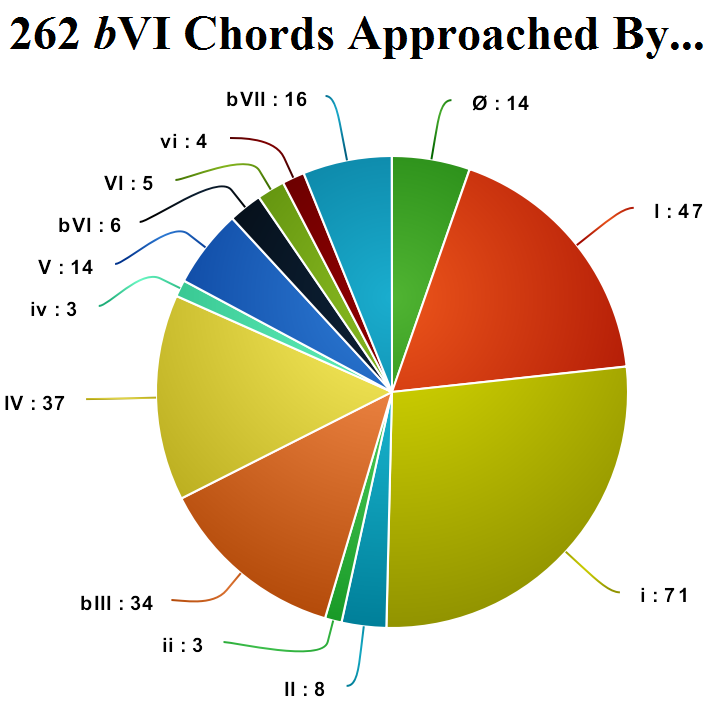
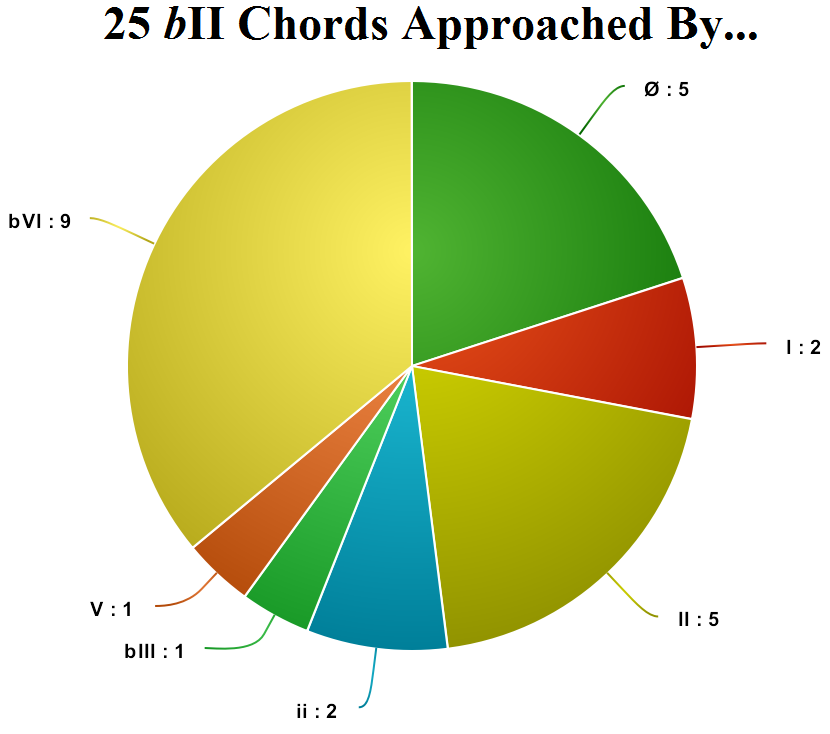
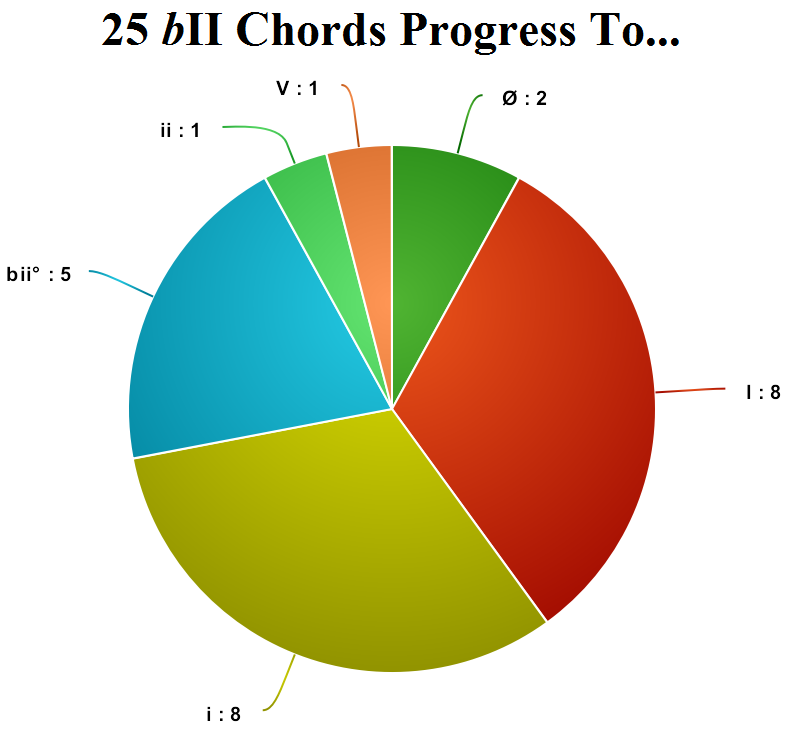
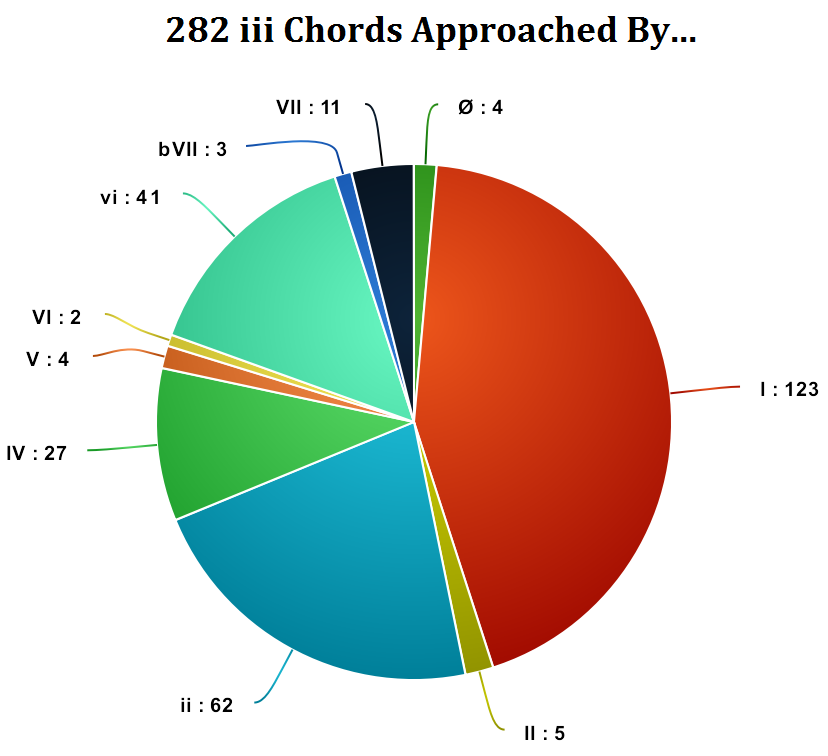
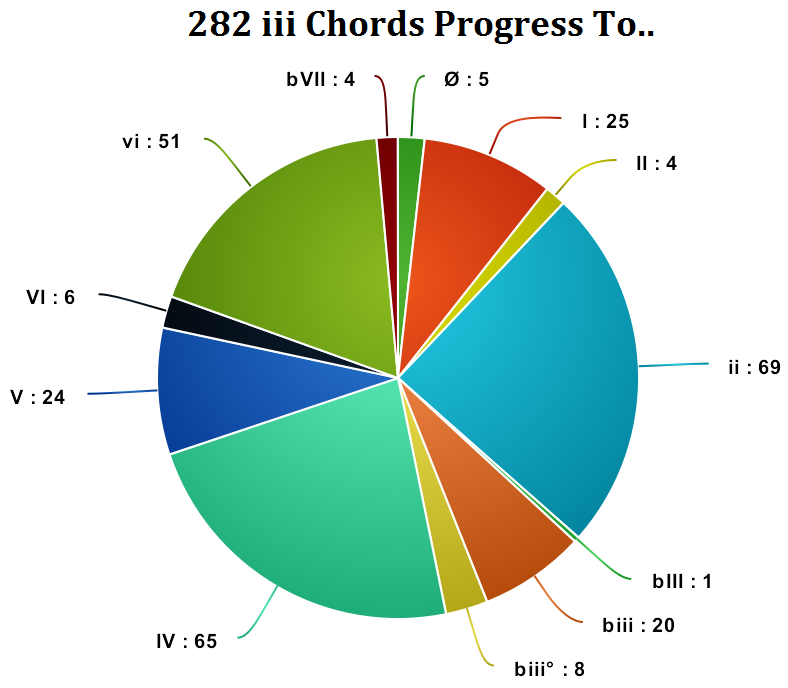
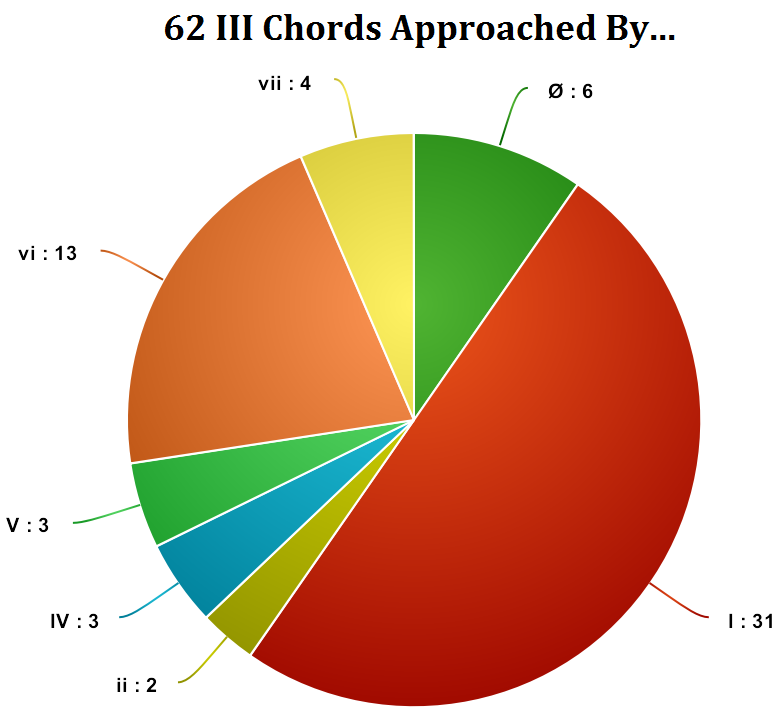
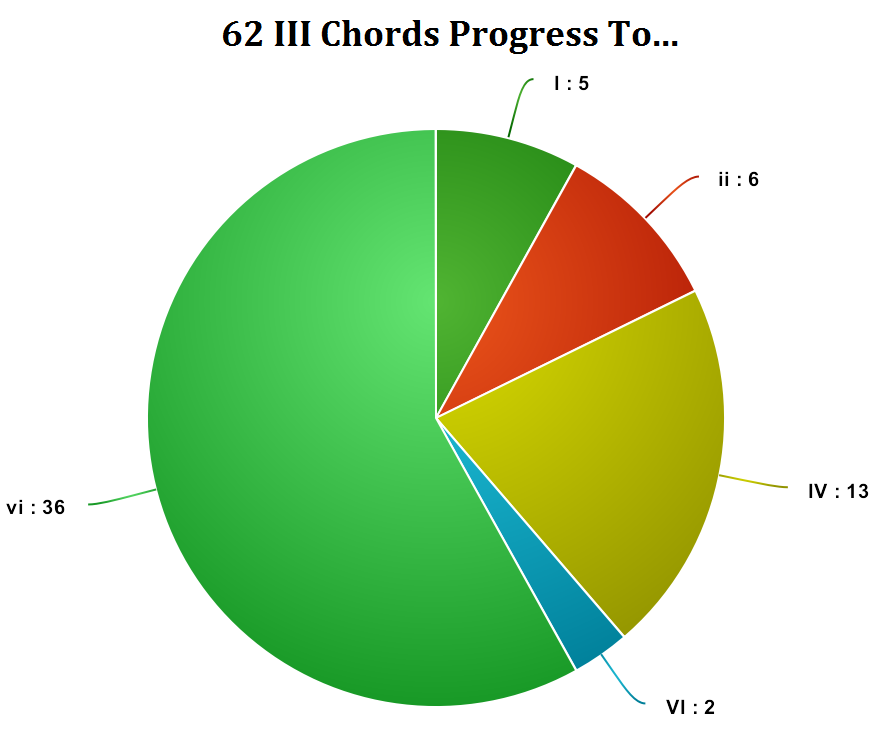
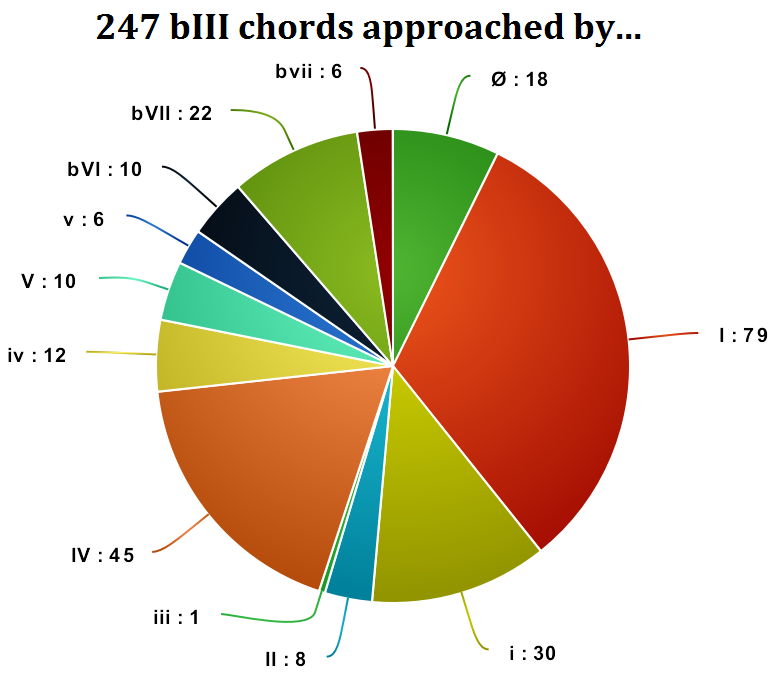
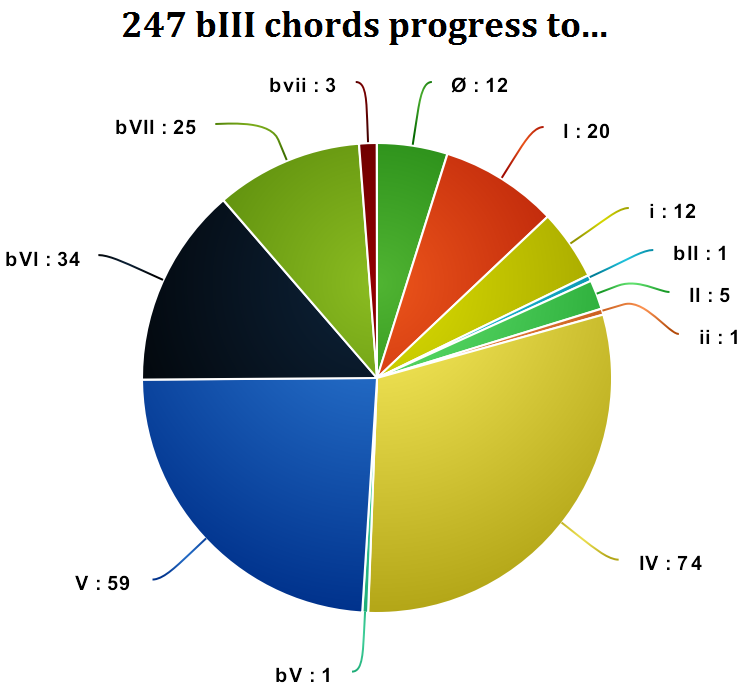





























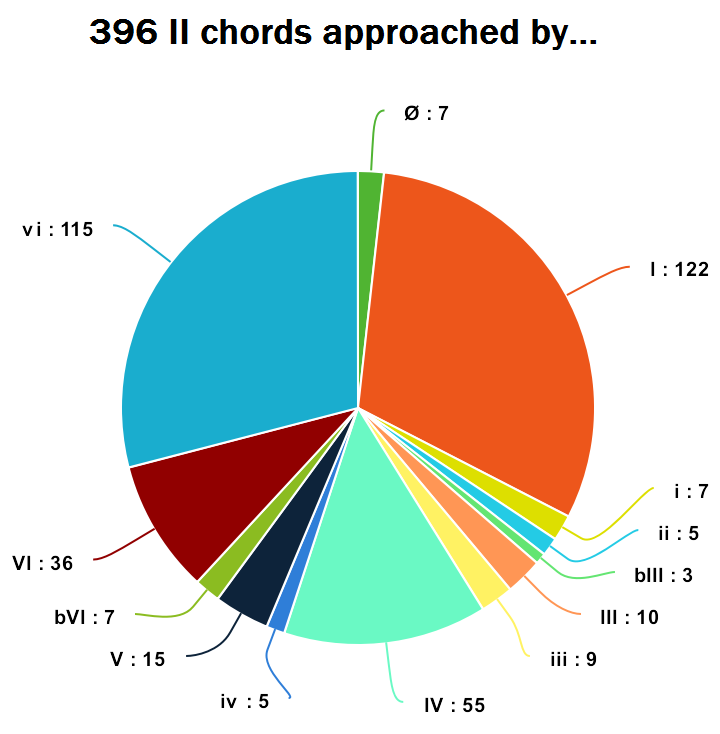
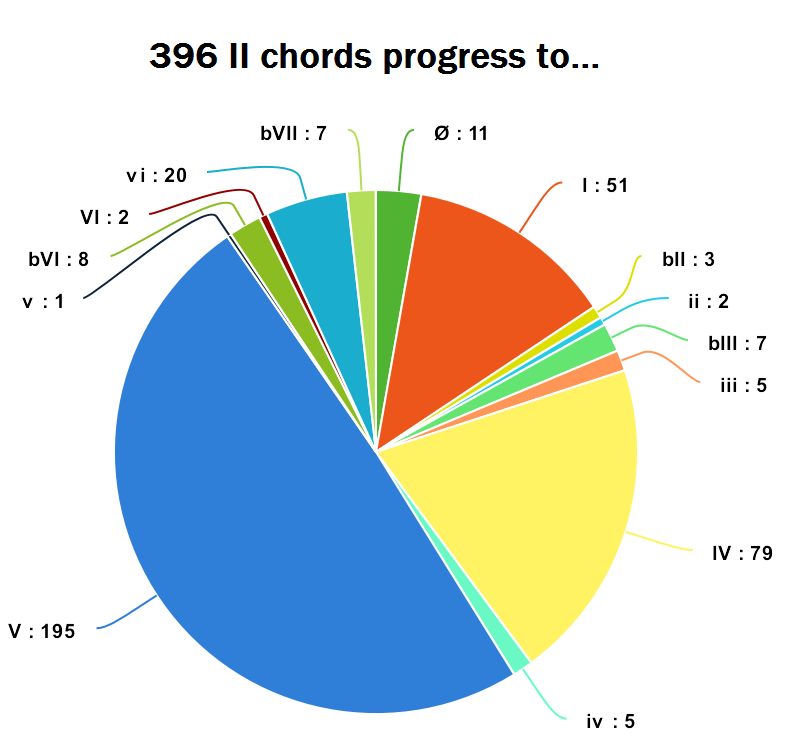


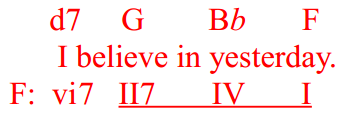






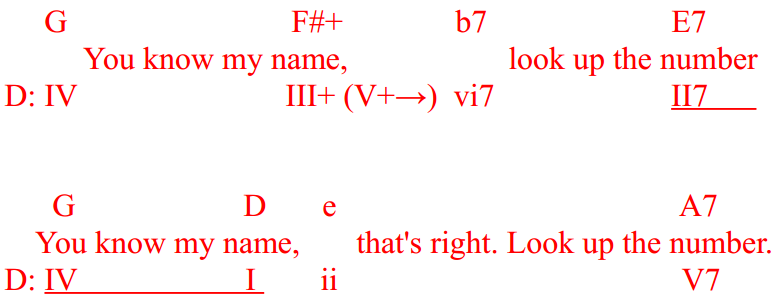














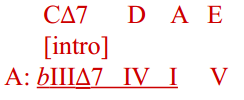




 RSS Feed
RSS Feed
